Tatar
Historical Overview Section
Tatar is a generic name used by their Western opponents for the Golden Horde and other successor Mongol groupings created after the death of Genghis Khan.
As was traditional (but not entirely sensible) on Ghengis' death, the Empire he created with the Mongol Invasion FoG list was split amongst his four sons. The western part of the empire including southern Russia and Kazakhstan became the Blue Horde and the White Horde. In 1235, the Blue Horde under Batu (with the great general Subedei) began an invasion westwards, conquering the Volga Middle Bulgarians in 1236. From here, in 1237, he conquered the southern steppes of the Ukraine, forcing the Cumans to flee westwards. Moving north, Batu then invaded the Rus' and for three years subjugated the principalities Kievan State, whilst his cousins Möngke, Kadan and Guyuk moved southwards into Alania. Using the migration of the Cumans as his casus belli, Batu's Horde, with an assortment of brothers and cousins, including Shiban, Orda, Kadan and future khagan Möngke Khan, continued west, raiding Early Polish and Hungarian territory culminating in the Battles of Legnica and Muhi. In 1241 the Great Khan Ögedei died in Mongolia and so Batu turned back from his siege of Vienna to take part in disputing the succession in what the Hungarian King declared was "a right spot of luck!". After Möngke Khan died in 1259, the succession war between Kublai Khan and Ariq Böke essentially marked the end of a united Mongol Empire. The war between Golden Horde under Berke Khan and Ilkhanate under Hulagu Khan, the Berke-Hulagu war, soon broke out in 1262 and The Golden Horde became a virtually independent state thereafter.
Uzbeg Khan Islamicized the Horde in 1315, and The Horde was gradually Turkified and lost its Mongol identity although the descendants of Batu's original Mongol warriors still constituted the upper class. The Horde exacted tribute from its subject peoples - Russians, Armenians, Georgians, Circassians, Alans, Crimean Greeks, Crimean Goths, and others (Balkan bulgars and Serbs). The territories of Christian subjects were regarded as peripheral areas of little interest as long as they continued to pay tribute. These vassal states were never incorporated into the Horde, and Russian rulers early obtained the privilege of collecting the Tatar tribute themselves. To maintain control over Russia, Tatar warlords carried out regular punitive raids to Russian principalities (in 1252, 1293, 1382). The Horde continued to dabble in regional politics, and a Tatar contingent supported the Later Russian principality of Novgorod in the Battle of the Ice against the Later Teutonic knights, and carried on a brisk trade with the Italian Condotta Genoese and Mamluk Egyptians in the Mediterranean as well.
The Black Death of the 1340s was a major factor contributing to the Golden Horde's downfall. Following the disastrous rule of Jani Beg and his subsequent assassination, the empire fell into a long civil war, averaging one new Khan per annum (a medieval measure of royal instability known as the "Khan Index") for the next few decades. In 1378, Tokhtamysh, a descendant of Orda Khan and ruler of the White Horde, invaded and annexed the territory of the Blue Horde, briefly reestablishing the Golden Horde as a dominant regional power but a fatal blow to the Horde was dealt by Tamerlane and his Timurid army, who annihilated Tokhtamysh's army, destroyed his capital, looted the Crimean trade centers, and deported the most skillful craftsmen to his own capital in Samarkand.
In the first decades of the 15th century, power was wielded by Edigu, a vizier who routed Vytautas of the Later Lithuanian kingdom in the great Battle of the Vorskla River and established the Nogai Horde as his personal demesne. In the 1440s, the Horde was again wracked by civil war. This time, it broke up into separate Khanates: Qasim Khanate, Khanate of Kazan, Khanate of Astrakhan, Kazakh Khanate, Uzbek Khanate, and Khanate of Crimea all seceding from the last remnant of the Golden Horde - the Great Horde. None of these new Khanates was stronger than the Muscovite Later Russian Empire, which finally broke free of Tatar control by 1480. Each Khanate was eventually annexed by it, starting with Kazan and Astrakhan in the 1550s. By the end of the century, the Siberia Khanate was also part of Russia. descendants of its ruling khans entered Russian service.
Who are these Mongols anyway then?
The FoG army lists reproduce the Mongols in many guises. They are:
- Mongol Conquest - Empires of the Dragon : 1206-1260, The origin of the Mongols, Ghengis Khan, invading China and Korea.
- Mongol Invasion - Oath of Fealty : 1223-1242, Ghengis invades Russia, his sons invade Bulgaria & Hungary and then turn into the Golden Horde Tatars.
- Tatar - Eternal Empire : 1242-1500, a multi-ethnic conglomeration extracting tribute from Russia, the Baltic, the Crimea and all the 'stans but finally coming unstuck against the Timurids and then the Ottomans.
- Ilkhanid Mongol - Swords and Scimitars : 1230-1353, Mongols (and assimilated Turks, Persians and Cumans) in Iran, Azerbajan, Iraq messing with the Crusaders, Caliphates and Caucauses. Has some Frankish knights for added interest.
- Timurid White Sheep Turcoman or Black Sheep Turcoman - Eternal Empire ; 1360-1500, Tamerlane, almost restoring Ghengis' glory days from China to Europe, 4 elephants, some bowmen on foot.
- Later Horse Nomad - Empires of the Dragon : proto-Mongols
- Yuan Chinese - Empires of the Dragon : Sedentary Mongols in China.
Using the army in FoG
You may want to review the Troop Types in FoG shooty cavalry page of the FoG tactical guide methinks...
- Like other shooty cavalry armies, your battle plan is usually to stake out as much ground as possible to block enemy Second Moves, at least in some sectors, and leave ample manoeuvre room behind your lines. What generals to take is an interesting question. New players take an IC to get steppe. But losing the initiative roll is no bad thing. There will be more terrain but you get to move first. So three or four TCs could be an option. Using a subordinate general field commander can be useful as his flank march will turn up earlier. Getting first move is very helpful so losing the PBI roll is preferred by some players, although your tough Cv may be willing to face the enemy in close combat, so its therefore less critical to keep lots of manoeuvre room to the rear.
- Sometimes you are lucky and the enemy deploys with a hanging flank you can readily outwing and envelop, or a good flank march opportunity presents itself, but often the terrain and enemy dispositions limit you to a frontal approach of disrupting, loosening and disjointing the enemy line of battle with shooting, threats, and uncontrolled enemy charges in order to expose gaps, flanks and other weak spots you then exploit with concentrated shooting or timely charges
- Destroy or flee enemy Skirmishers, draw their mounted and aggressive foot away from their other troops by skirmishing - he will have to charge shooters to reduce their effect - pick off isolated detachments, and provoke charges where possible. Work around his flank and hunt his BG count filler such as Mobs and LF.
- Ultimately your cavalry will need to be the ones to win the battle for you by running down your opponents - remember this and don;t expect your LH to do all the work in eroding enemy morale and competence to breaking point.
- One common mistake with all Shooty cavalry is to take advantage of the possibility evade too often - superior armoured cavalry swordsmen are still very potent combat troops against most enemies, and it is often better to advance in 2 ranks (inflicting more shooting as a result) and take on any enemies in hand to hand combat.
- The time to commit is once an enemy has gone disrupted, or if they have lost bases - waiting and skirmishing in the hope they go fragmented may well be gilding the lilly.
- Superior (un)protected drilled cavalry are risky but interesting when combined with other LH on a flank - they will outmatch standard LH in combat, who might otherwise risk standing up to your expensive Superior LH - and may catch them when they evade. They are just as good as armoured cavalry against Heavily Armoured knights as well.
- The MF in this army are terribly weak and most things on the table will bully them. If they are undrilled they won't even be able to get away!
- Protected Bow Cavalry should be Superior and no more than two bgs.
- Cavalry should be drilled for enhanced manueverability.
- Mongol types are a good army in this game. The main army option is Drilled Cavalry and light horse with bow. Make the cavalry superior armoured. There are opposing schools of thought on whether the light horse should be average or superior, with the latter shading the argument (because their shooting is just better enough to make the difference). That then makes you worry about the number of battle groups.
- By using several LH BGs, you run those up the middle and slow down the enemy's (hopefully) less maneuverable units. With the flanks unprotected, you should overload a flank with your cavalry and light horse. Try to swing your LH around the flanks and rear of a single anchor.
- I've seen my buddies drop no less than 9-10 dice onto a single BG. For most BGs, you are hitting on 4s and should get 4-5 hits easily (especially with your re-rolls). That means, every time you can pull that off, your opponent will have to test with a -1 or -2 and take a deathroll! No, you don't win quickly, but it is hard to lose too.
- One of my frequent opponents complained that an army like the Mongol Conquest have too many superior and not enough dice. You end up taking too long and running out of time to win. To offset that, he prefers to use the LH to disrupt an opponent and then charges in with a slightly less expensive, Superior, Armoured Lancer Cavalry. You end up busting through that anchor more quickly and can then ,rapidly, take advantage of the failed battleline. This (of course) means that you have to find a different steppe army (perhaps the Huns?)...
UK Tournament Results with this army
8 / 8 Tatar Godendag 2008 Doubles (EE)
9 / 27 Tatar Britcon 2007 15mm (open)
Useful Links
User-contributed links about this army:
- Register and you can put you own link in here and then write some brief detail about the link here
- Register and you can put you own link in here and then write some brief detail about the link here
- put the link text readers will see in here write some more detail about the link here
Allies
- Russian, Later . Date restrictions: None Book: Eternal Empire Page: 23 - Up to 18 Bw/Sw cavalry, not adding much to the main army really
- Ottoman Turk, Later . Date restrictions: None Book: Eternal Empire Page: 8 - Bw/Sw Cavalry & LH in any combination of armour and quality you might wish for, plus some Balkan Lh Lancers and a nice 6-strong Janissary Bw unit
15mm Manufacturers supplying figures for this army
You can see some of the figures in the Ancients Photo Gallery also on this site. The Mongols had many subject troops, so look at the other Arab and East European ranges as well.
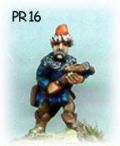
|
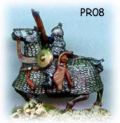
|
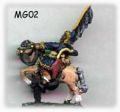
|
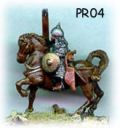
|
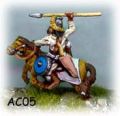
|
- Essex Miniatures Ilkhanid Mongols in their Crusades range, 9 Mongols in their ancients range
- Donnington 30+ Mongol figures
- Gladiator Miniatures by Fighting 15's (Gladiator Games) 5 Ilkhanids in their Crusades range
- Old Glory 9 Mongols
- Museum Many Mongol and other figures
- Irregular Minis 13 Mongols in their Asian and Turk ranges
- Lancashire Games 5 Mongols in their Ancients ranges, some tatas in their Renaisance range
- Isarus (more former TTG figures) 19 Mongols
- Viking Forge Mongol range with 5 figures
- Brian Hall’s Hall of Ancient Warriors 6 Mongols
- Battle Line (NZ) former TTG Ranges, as above
- Outpost - Central Asian Turk range
- Khurasan - Many Central Asian types
- Legio heroica Turcomans in their Crusades Arab ranges
- Legio Heroica new range (as of 2010) of Mongol cavalry
- Naismith & Roundway Turcomen in their Persian range, and 3 Mongols in the Naismith Far Eastern Range
- Fire & Sword System Crimean Tatars and Cossacks
- Alain Touller Alain Touller, who sadly passed away in 2014. The ranges are no longer available, but included true 15mm figures from France - lots of variety in their "Peuples des steppes" range
Core Troops
Which troops are absolutely needed for this army, and what are your thoughts on how to organise, paint and buy them.
Army Lists
Sample army lists for this army
Name of Army / Date
- Using asterisks inthe edit mode creates a bulleted list in the actual site
- This is a lot easier to do than easier than setting up tables
- For FoG I suggest listing your army in order or march
- with troop desctiptions on each line, for example
- 4 HF Armoured Average Drilled Impact Foot Swordsmen
- 8 LG Undrilled Unarmoured Poor Bowen
- Dont forget to include your Generals !!!
Include any notes you want here, including comments on how to use - or play against - the army.
Remember to leave a line before you copy the above section as a template for your own list
eBay Listings
UK Bookstore
